

Zenitar and Peleng Fisheye Lenses for Digital SLRs
What about the Fisheyes?
An alternative way to get wideangle Digital SLR lenses is rather than to use superwideangle zooms, use a fisheye lens. These are lenses with a very wide field of view, but they distort the image. Actually all lenses distort the image in some sense. Rectilinear wide angle lenses actually stretch objects near the edges of the frame, but most people find this more acceptable and "natural" than the fisheye view. The fisheye view doesn't stretch objects at the edge of the frame - instead it bends lines.You can convert a fisheye image to a rectilinear image digitally and the process is pretty simple (it's a built in function of many image editors, such as Paint Shop Pro), but in doing so the edges of the fisheye image must be stretched, requiring new pixels to be created by interpolation and thus reducing sharpness and resolution.
Fisheye lenses come in two types. The first is called a "full frame fisheye" and is designed for a 180 degree diagonal field of view on a full frame 35mm camera. These typically have a 15 or 16mm focal length. The second type is known as a "circular fisheye" and produces a 24mm diameter circular image in the center of a 35mm frame, with a 180 degree field of view all around. These typically have a focal length of 8mm.
When used on a small sensor DSLR the field of view is smaller of course. Exactly how small depends on the exact mapping function of the lens. A 16mm fisheye on an EOS 20D, produces an image which, when "defished" has something like the horizontal field of view of a 20mm lens on a full frame camera (or a 12.5mm rectilinear lens on an APS-C sensor camera). The amount of "defishing" required is actually quite small, so edge quality doesn't greatly suffer. An example is shown below:
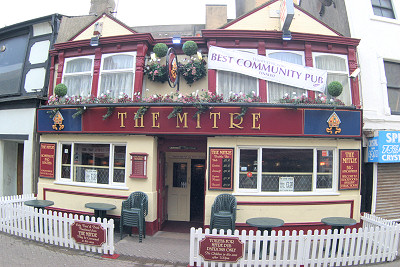
16mm fisheye on EOS 20D

"defished" 16mm fisheye on EOS 20 ("defished" in Paint Shop Pro)
As you can see, a small amount of coverage is lost from the corners of the image when it is "defished", and the aspect ratio changes slightly since it has to stretched a little more in the horizontal direction than in the vertical direction to correctthe fisheye "distortion".
"Defishing" an 8mm fisheye image requires much more severe processing. An example is shown below:
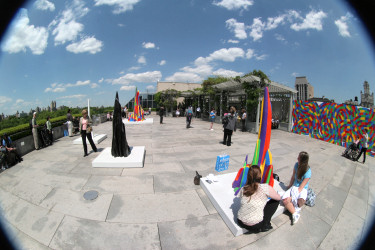
8mm fisheye on EOS 20D
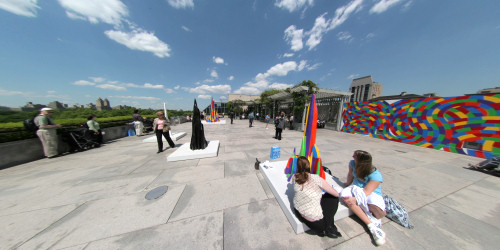
"defished" 8mm fisheye on EOS 20D ("defished" in Paint Shop Pro)
As you can see, the corners are dark in the straight 8mm fisheye shot - this is expected since on 35mm film, you'd have a circular image in the center of the frame. The APS-C sensor size just crops the full frame 35mm image so you only see dark corners. This time the defishing results in even greater relative stretching in the horizontal direction and there is a significant quality loss towards the edges of the frame. Objects appear stretched, but they would be just as stretched if you had used an ultrawideangle rectilinear lens. The horizontal field of view is about that which you'd get from something like a rectilinear 4mm lens on a full frame 35mm camera (impossible, doesn't exist!) or a rectilinear 2.5mm lens on an APS-C camera (also impossible, doesn't exist!).
Thus the defished 8mm image does give you something unique which could not be shot with a rectilinear lens, while the defished 16mm image gives you something that resembles a shot that could be taken with a moderate (12.5mm) rectilinear wideangle on an APS-C body. Edge quality on the defished 8mm image is poor, but on the defished 16mm image it's pretty acceptable. Center quality in both cases is good since the center of the image is not stretched. Samples from 50% crops are shown below:
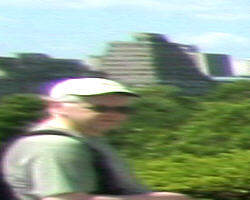
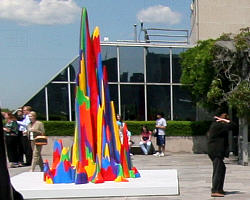
(left) 50% crop from edge of 8mm defished image: (right) similar crop from center
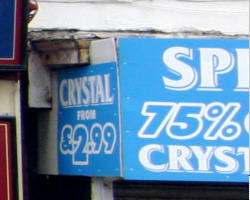
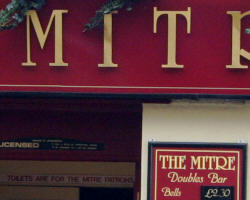
(left) 50% crop from edge of 16mm defished image: (right) similar crop from center
Fisheye Choices
Both Canon and Sigma make 15mm f2.8 autofocus fisheye lenses for Canon EOS bodies. The Canon Lens runs around $600 and the Sigma lens around $470. There is also a 16mm f2.8 fisheye made in Ukraine called the "Zenitar" and I have a review of that lens elsewhere on this website (Zenitar 16/2.8 fisheye review). The Zenitar isn't sold by any of the major vendors, but can be easily found on Ebay selling for somewhere around $130. It's manual focus of course and usually needs an M42 screw mount to EOS adapter for use on EOS DSLRs. Native EOS mount versions may be available too. There's also a Nikon mount version.
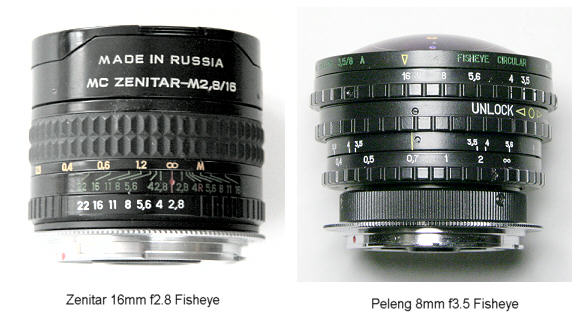
Circular fisheye lenses are harder to come by. Canon doesn't make one in an EOS mount. Sigma however does make an 8mm f4 circular fisheye lens in an EOS mount at around $580. Note that there have been some compatibility problems reported with older versions of this lens on the EOS 20D (and maybe the 300D and 350D?), but Sigma may be able to rechip the lens for proper operation. Again there's also a fully manual version made in Ukraine, the Peleng 8mm f3.5. Again the best place to look for one is on Ebay and you may need an M42 to EOS adapter for use on EOS bodies (though, like the Zenitar, I believe that native EOS compatible mount versions can be found, as well as Nikon mount versions). Prices currently run the region of $250-$300
I have both the Zenitar and Peleng lenses and I bought them via EBay directly from vendors in Russia (or Ukraine). Shipping took a week or two, but I had no problem with either order. There are now also a few importers shipping directly from the US.
